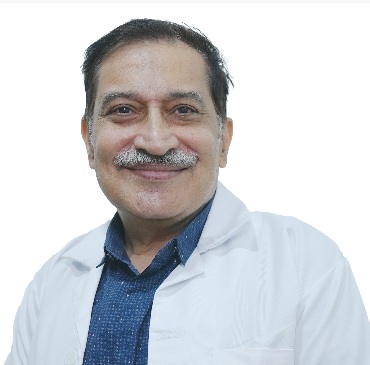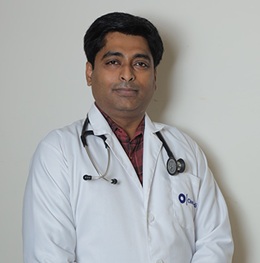Fracture Care: Casting to Surgery Options

Treatment Duration
30 Minutes
------ To ------60 Minutes
Treatment Cost
₹ 1,20,000
------ To ------₹ 1,80,000

Table of Contents
- What is Fracture Treatment?
- Who needs Fracture Treatment?
- What may happen if Fracture Treatment is Delayed?
- How is Fracture Treatment is Performed?
- What Can You Expect Before Fracture Treatment?
- What Can You Expect on the Day of Fracture Treatment?
- What Can You Expect During Fracture Treatment?
- What is Recovery and Post Op. Care after Fracture Treatment?
- What are Risks and Complications of Fracture Treatment?
You can check Fracture Treatment Cost here.
What is Fracture Treatment?
Fractures, also known as bone fractures or broken bones, are typically caused by injuries, accidents, or falls. The fractures can take place along the length of a bone or straight across the bone. The break in the bone can change its shape, split it in two or leave it in many pieces. Fractures usually take time to heal.

Expert Doctors (10)
NABH Accredited Hospitals (10)


Who needs Fracture Treatment?
Fractures often occur due to injuries and accidents when a bone runs into a powerful force that it cannot withstand. Another reason for fracture can include ageing. As a person ages, their bones weaken, a condition also known as osteoporosis.
The symptoms of a fracture vary according to the person’s age and the location of the injury. However, some common symptoms of a bone fracture include:-
- Pain and swelling
- Immobility of the affected area
- Discoloured skin
- Unable to put weight on the affected area
- Bleeding in the case of an open fracture
- Noticeable bend, bump, or twist
What may happen if Fracture Treatment is Delayed?
When you witness the signs of a bone fracture, you should immediately consult a doctor. If a fracture is left untreated, it can result in nonunion or a delayed union.
- In the case of nonunion, a bone does not heal at all. Simply put, the bone remains broken, resulting in increased pain and swelling over time.
- In delayed union, the fractures take longer to heal than usual. In some cases, the person can make a full recovery. However, in other cases, complications may arise.
How is Fracture Treatment is Performed?
The fracture treatment includes non-operative (closed) and operative (open) approaches.
- The Non-Operative Approaches include:-
- Casting: Casts and splints made of plaster of Paris or fibreglass are used to stop the limb’s movement.
- Traction: This method is used when the fractures cannot be treated with casts. It includes skeletal traction and skin traction.
- The Operative Approaches include:-
- Open Reduction and Internal Fixation: In this method, the surgeon uses metal rods, plates, and screws that stay under the skin after the surgery to repair the bone. This method is used for complicated fractures or in cases where casts cannot be used for a long time.
- External Fixation: In external fixation, pins and screws are placed into the bone on both sides of the fracture. The device is an external frame that is secured using clamps and rods to support the bone and hold it correctly while healing.
The most common surgical approach is open reduction and internal fixation, which is done in 2 parts:-
Step 1: Open Reduction: The surgeon cuts through the skin and moves the bone back in its position.
Step 2: Internal Fixation: The surgeon attaches metal rods, screws, and plates to hold the bone together.
Step 3: Closing: The surgeon then closes the incision with stitches or staples, applies a bandage, and puts the limb in a splint or a cast.
What Can You Expect Before Fracture Treatment?
- Open Reduction and Internal Fixation (ORIF) occurs in urgency or emergency.
- Before the surgery, a healthcare professional performs a physical exam and takes your medical history.
- The doctor will conduct more pre-op tests, including MRI, CT scan, blood test, and X-ray.
- They will decide the type of anaesthesia to be used during the surgery.
- In addition, they will inform you to fast after midnight, the night before your surgery and stop taking medications.
- They will explain the surgery procedure and the details, which will depend on the location of the surgery. Furthermore, you will get the opportunity to ask your questions.
- The doctor will inform you of the duration, usually 1 to 2 hours, the cost of the procedure and the estimated hospital stay.
What Can You Expect on the Day of Fracture Treatment?
- On the day of surgery, you will be asked to sign the consent form.
- The doctor will ask you to change clothes, remove non-permanent dental work and jewellery.
- The team will monitor your vitals, including your heart rate and blood pressure and shift you to the OT room.
What Can You Expect During Fracture Treatment?
- An orthopaedic surgeon and his team of healthcare professionals will perform your fracture surgery.
- You will be made to sit in a specific position on the operating table. The position will depend on the location of the fracture.
- In most cases, you will receive general anaesthesia to make you sleep during the procedure.
- A healthcare professional will monitor your vitals and insert a breathing tube in your throat to help you breathe.
- The surgeon will clean the affected area with a disinfectant and make an incision through the skin and the muscle.
- The surgeon will then bring the piece of bone back into the position (reduction).
- Then they will use metal rods, plates, and screws to secure the pieces together (fixation).
- After the bone is secured in its position, the team will close the incision with stitches or staples.
What is Recovery and Post Op. Care after Fracture Treatment?
In Hospital
- After the surgery, the team will shift you to a recovery room to observe vitals.
- Once your vitals stabilise, they will shift you to a private or general ward.
- The doctor may prescribe some medicine to ease your pain.
- The healthcare professionals will perform an X-ray to check if the surgery was successful.
- Depending upon your condition, you will get a discharge within the next couple of days.
At Home
- Although complete recovery depends on the location and types of fracture, a general recovery takes around 3 to 12 months.
- You may need to protect the affected area from the water.
- Your doctor may suggest some medicine to prevent blood clots for some time after the surgery.
- They may also suggest you have a diet rich in calcium and Vitamin D to boost the process of bone healing.
- The doctor will suggest physical therapy at a future time to restore the strength and flexibility of the muscles.
First Follow-Up Appointment
After the surgery, your surgeon may require you to visit after a week or so to get your stitches or staples removed. They may also prescribe some medicines and examine the recovery via some diagnostic tests. Follow all the provided instructions carefully.
What are Risks and Complications of Fracture Treatment?
You may want to consult your doctor if you experience the following after the surgery:-
- Redness
- Swelling
- Foul-smelling drainage
- Bacterial infection
- Blood clot
- Chronic pain
- Reduced mobility
More Treatment options
Last Updated on: 13 October 2025
Author
HexaHealth Care Team
HexaHealth Care Team brings you medical content covering many important conditions, procedures falling under different medical specialities. The content published is thoroughly reviewed by our panel of qualified doctors for its accuracy and relevance.
Latest Health Articles
























